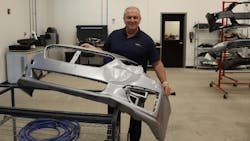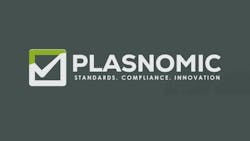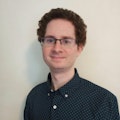Bridging Gaps in Plastic Repair Practices: A Collaborative Industry Approach
Key Highlights
- The council is collecting plastic repair practices from around the world to create a unified standard for collision repair professionals.
- Diverse regional advancements and challenges are considered to develop tailored and effective repair solutions.
- The initiative emphasizes collaboration with training bodies like I-CAR and engagement with OEMs to meet industry needs.
- A centralized platform will be established for repairers to access, contribute, and update plastic repair standards continuously.
- The project aims to improve repair quality, safety, and sustainability while fostering industry unity and innovation.
Plastic makes up 50-60% of the average claim replacements for pickup beds, headlights, bumpers, or trim for collision repair professionals. However, there are no standards for plastic repairs across the world and Plasnomic, led by its global Plastic Repair Alliance Council, is taking the initiative to rectify the issue.
Established this year, the council will gather the best plastic repair practices from every continent to create a universal standard for plastic repairs. Mario Dimovski, who entered the industry as a plastic repair apprentice at 16, brings three decades of experience to the head of the initiative.
“It's not a sprint; it's a marathon,” Dimovski said. "Collectively, we need to reach the end goal and establish an industry alliance or mutual understanding of what best practice methods are, and what plastic repairs should look like, backed by testing, experience, and process validation."
One of the major difficulties Plasnomic faces is the variance in advancement between countries. Dimovski explained that his home country, Australia, is fairly advanced, as is the U.S. Other places, such as India and the Middle East, are still developing as technology evolves. The car parcs across the different regions of the world also vary wildly.
“Each region will face different challenges depending on where they are in their growth or expansion strategy for plastic repairs,” he said. "Our council members represent countries at varying stages of plastic repair adoption, which is a great advantage. It allows us to develop tailored solutions as we listen to their input and contributions, helping to shape the plastic repair standardization, adoption, and education journey in a way that’s localized to their specific needs.”
The council represents collision repair organizations across the globe. Members include:
- Anso Jacob, Body Shop Guru, India
- Charles Canning, Halo Group, South Africa
- George Varagic, Industry Exec, Canada
- Graham Threlfall, AkzoNobel, UAE
- John Morrissey, Plastfix, Australia
- Kurt Lammon, Polyvance, U.S.
- Leonardo Gomez, Mirka, Germany
- Meghan Barrera, SEM/PPG, U.S.
- Mario Dimovski, Boyd Group, U.S.
- Peter McAninch, Plastrepair, UK
- Rebecca Miller, 3M, USA
- Robert Snook, IBIS Global, UK
- Ryan Gafford, Caliber Collision, USA
- Okuda Teruyuki, Asia, Japan
- Roberto Sticca, CSN Collision, Italy
They must distill the world’s best practices to create a universal standard for collision repairers. Dimovski said it’s not that anyone is doing it wrong per se, but many are set in doing plastic repairs the way they’ve always done and don’t know that there might be better or more efficient ways out there.
“That’s the only way because we want to make sure we have access to, and knowledge of, the entire collision plastic repair market. There could be an incredible tool, material, or welding machine in a small corner of Italy or South Africa that nobody has even heard of,” Dimovski said. “Just because it’s not on LinkedIn or social media, how would you know about it? That’s the whole purpose of this call to action that has generated so much interest from all pockets of the industry globally.”
The council is currently gathering information from repair providers, trainers, and tool, material, and equipment manufacturers. They’re encouraging as many as possible to join the council to provide their experience and input. They’ve already received responses from across the globe including companies in the U.K., U.S., Brazil, and Turkey.
"The whole objective is to identify and extract any plastic repair solutions currently available around the globe,” Dimovski said. “From there, we can begin to formalize what we have in front of us and determine what we need to adopt and refine in order to create standardized methods and validate specialty supplies.”
The end goal is to have a set of best practices that Plasnomic can present to OEMs. Dimovski said Plasnomic needs to first establish itself as an authority on plastic repairs with best practices backed by test data and thorough due diligence before approaching OEMs.
“We want to be ready with facts on the best, safest, and OEM-compatible ways to repair plastics,” Dimovski said. “We need to go in so well prepared that whatever they ask, want, or need, we already have the answers. For me, there’s still a lot of work to do before we reach that stage; they are the last and final piece of our puzzle.”
Dimovski hopes to create a centralized platform where any collision repair professional or shop can go to ask a question about plastic repair and get the answers they need. They can contribute and modify the standards as plastic repair continues to evolve.
The council also wants to work with training bodies such as I-CAR to help spread the knowledge to repairers. Dimovski said they’re partnering with world-leading automotive based laboratories to conduct various tests on plastic repair methods, including ADAS components, and how different repair techniques perform across different plastic types.
“The shops will be the clear winners, gaining access to an authority and central platform where they can acquire knowledge, best practices, and support to repair to a unified plastic repair standard,” he said. “Plastic has evolved significantly over the last couple of decades. It used to be a straightforward polypropylene, but today most plastic bumpers, for example, are made from a polypropylene/EPDM blend, which is softer and more rubber-like. These material changes are reshaping how repairs must be approached.”
Dimovski feels humbled to head what he considers to be one of the most dynamic groups he’s ever seen the industry assemble. His responsibility is to absorb everyone’s information, filter ideas, and be a coordinator and mediator. He works full-time for The Boyd Group Services Inc. as well, so he lends his extensive plastic repair expertise and makes sure the council is talking to the right people.
Plasnomic’s initiative represents a unique opportunity for the collision repair world to come together and generate more work for collision repair shops while improving sustainability and customer safety.
“It’s a testament to everyone involved in this council, as well as the partners and those continuing to come on board to contribute,” Dimovski said. “This is exactly what the industry has needed. I truly believe this is a sign of greater things to come as the industry unites to achieve more together.”
About the Author
Peter Spotts
Associate Editor
Peter Spotts is the associate editor of FenderBender and ABRN. He brings six years of experience working in the newspaper industry and four years editing in Tech. He has a bachelor's degree in journalism from Western New England University with a minor in integrated marketing communications and an MBA. A sci-fi/fantasy fan, his current 2010 Honda Civic is nicknamed Eskel, after the character from the Witcher book series, for the scratch marks on its hood.
Don't miss Peter's next article. Sign up for FenderBender Today's Collision Repair News here.


